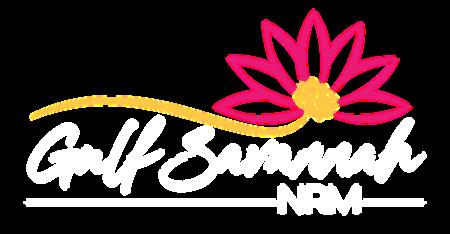


























As 2022 draws to a close, both the silly and wet season are upon us With a La Niña declared and underway this summer, we'll be looking out for potentially wetter than normal weather across the North perhaps we can look forward to a cool, stormy breeze for Christmas lunch?
A big thank you to all the land managers, Traditional Custodians, community members, graziers and farmers who we've worked alongside this year It's been quite a massive year for NRM projects, and we're excited to hit the ground running again in the new year

Gulf Savannah NRM wishes all our readers a relaxing and fun festive season, and we look forward to seeing you in 2023.


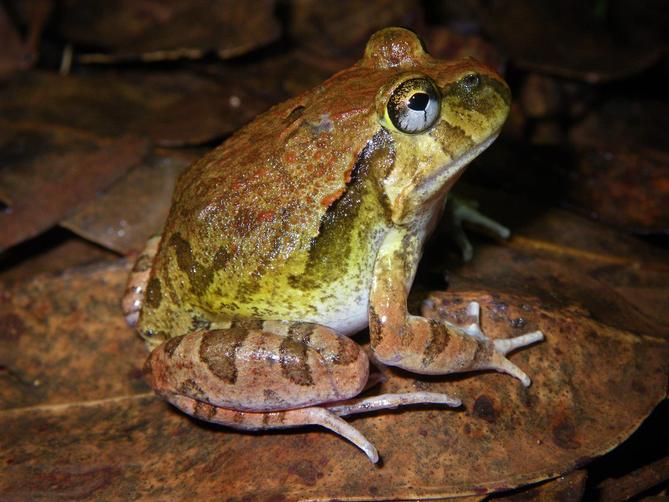

A Sydney couple travelling around Australia on a working holiday recently rescued an orphaned joey found on the side of the road. Driving more than five hours along the Savannah Way, the couple continued to look after the joey until a police officer in Normanton helped them find a kangaroo carer in Croydon Source: Nine News



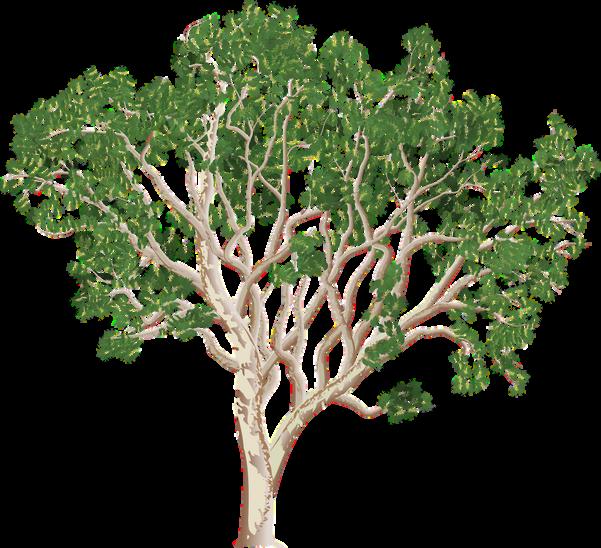
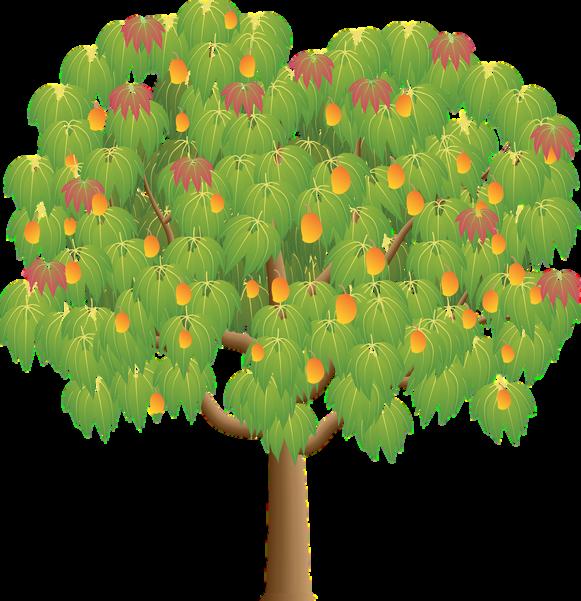












Australia is now 1 47C degrees hotter than it was in 1910, CSIRO and BOM have found, and annual sea level rise is happening faster in the Gulf of Carpentaria and the waters around Sydney compared to the rest of the country Source: The Guardian, November 2022 NORMANTON

A producer has snapped up the 81,000 hectare property Kutchera in the Northern Gulf region for more than $12 million prior to auction. Source: Australian Rural & Regional News, November 2022
9,660 people live in the Northern Gulf

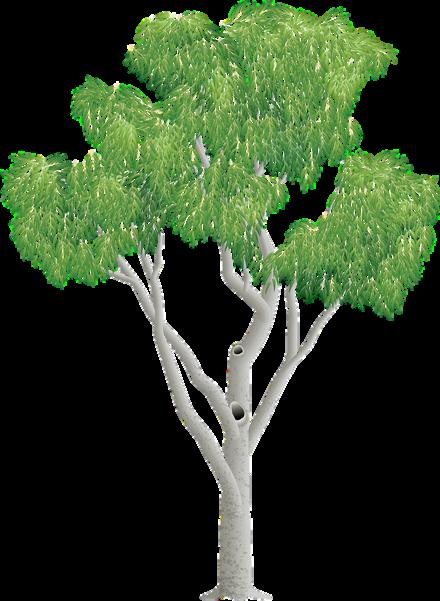

Kowanyama Aboriginal Shire Council is one of four FNQ councils to receive State funding to better manage invasive pests The four councils will work together across the Far North to coordinate pest control and improve biosecurity in the region
88% land use is grazing on native pasture
The first pieces in a Mareeba Shire based public art trail have been completed, with Far North artist Sara Dragotto transforming drab water tanks into beautiful murals in Biboohra Source: Cairns Post

Students at Mount Molloy State School got to cook alongside Kitchen Garden Foundation founder and celebrity chef Stephanie Alexander, after the school won a national video competition Congratulations, Mount Molloy!

The area is 196,100 square kilometres
Over 196 reptile, 455 bird and 118 mammal species live here



In 2019, a large flooding event swept through Carpentaria Shire, mainly impacting the area between the Norman and Flinders rivers, as well as the towns of Normanton and Karumba. Craig Young recounts his experience of conducting repeated helicopter surveys for the Carpentaria Shire Council to determine the extent of the floods.
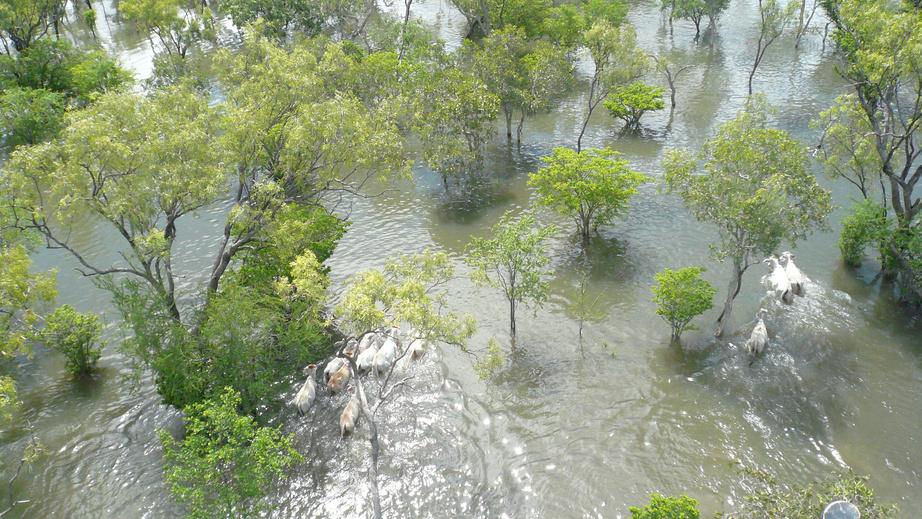
"The first question is, why was I flying around in a helicopter every second day?
Two reasons. The first was to get accurate and up to date information on just what the flood was doing. Common with many emergency events, in the absence of good on ground intel, the rumour mill, gossip and “expert” opinion fills the void.
We had stories circulating of “walls of water” and impending doom for towns. People then have to try and sort out fact from fiction and make plans and already stressed communities just don’t need that
Our floods can spill over hundreds of thousands of hectares, taking days to arrive and weeks to recede We didn’t have the luxury of looking on the web at multiple stream gauging sites and real time flood forecasts, we couldn’t get in a car and drive around The only way to find out what was really going on was to get in a helicopter and go and look So that’s what we did
To benchmark the progress of the flood water, I’d take photos every two days of the same things, like gate posts, half a vehicle sticking out of the water, a truck crate. These gave us a series of flood gauges to monitor whether the water was rising or falling.
At the end of each helicopter survey, I’d come back to Normanton and debrief with the Council, updating our action pans. I’d then go back to Karumba and go around to all residents, the caravan parks and pubs and just tell people what was going on, getting facts into the community and providing reassurance. Gulf locals are a resilient bunch, and when they know what they
are dealing with, they just get on with it. Then two days later I’d do it all again.
The second reason was that in the Gulf, every flood is different. Our region is very flat, and you cannot easily pick one catchment from another when it’s dry. Water coming down one system, say the Flinders, can spill out across the floodplain and over into another system, like the Norman River. Even if that catchment hadn’t had the rainfall upstream, suddenly you’ve got a lot of water coming down. That can have a very big impact downstream and to plan, you need to know where the water is going and what’s happening.
By flying over the flooded area and using our impromptu flood gauges, I could see where the water was coming from and going to over several days The only reason I got to see the Flinders/Norman catchment boundary was we just happened to be flying there one day and the water level had gone down to a point where you could see the break point Some water was going back to the Flinders and some was going back to the Norman If you’d walked over it in the dry, you’d never know which was which
The 2019 flood was unique. It was big, and at its peak exceeded historic levels in some localised areas.

However, there wasn’t a lot of water coming out of the Croydon forest country... luckily. In a “normal” flood event, you’ve got a lot of water that comes out of that country, down Belmore Creek into the Carpentaria Shire. Roads like the Normanton Karumba stretch get cut off at Walkers Creek pretty quick, and stay cut for days or weeks.
It was also pretty unique in that typically, with floods down the Norman, the water comes up, lays about and goes down. However, with this flood spilling across from the Flinders, water flowed very quickly. There was a “rain bomb” over the headwaters of the Flinders catchment around Julia Creek that hung around for days, which sent a lot of water downstream. But the rain was localised so the Gilbert and Leichardt weren’t that flooded, as you would usually expect
In the end, the towns in Normanton and Karumba fared pretty well in 2019 One thing I think that helped us in this event was that the salt flat country that goes from Karumba to the west across nearly to Morning Inlet allowed the flood water to drain out How a flood behaves along that Carpentaria coastline has a strong, seasonal, tidal influence A lot of water was able to drain off that way and take off some pressure from the Norman
Later on, we could see on the satellite images the big plume of muddy waters that had gone west. There was also less water than the 2009 floods, but levels did come up much quicker in Normanton.
When the flood gets big enough, it just makes its own rules.

Ten years prior, the 2009 flood event was a big one for Carpentaria Shire. Ashley Gallagher, a multi generational local, Councillor, business owner and grazier looks back at the event.

"We were living out on Sawtell Creek at the time, but we also had the butcher's shop in town We knew it was going to be a big flood, but just not how big As my wife was pregnant with our fourth child at the time, we made the decision to get them safely out of town We drove across to the Tablelands, then I headed back home to prepare
Lucky for us we had my parents, brothers, friends and family around to help move stock out of our river country and up onto our hill country However, once it starts raining, you can't safely get a chopper up or drive about You need to hope you’ve done your preparation well, and then get back to it when conditions allow. We still had some cattle stranded on islands, and once we could get back out there, we needed to swim them to better country.
The water came up, and Normanton was cut off. Then the old Einasleigh crossing at Georgetown was washed out, and trucks to resupply the town couldn’t get through, and roads up from the Isa were also cut. For quite a while they had to fly supplies into town. Once the road was passable at the Einasleigh again, we could get trucks
through to the river, and then we just ferried everything across in boats We did that for about four weeks
That’s a great thing about Normanton and Karumba they're very resilient and self reliant communities.
With the SES flood boats and locals helping out, we ferried everything in and out of town that we needed to keep the community running more than 200 tonne worth one week This really helps a community, as apart from the water surrounding the town, everything keeps working if supplies get in Deliveries were on time, tyres got fixed, the pub had beer, you could get a new battery, all the normal food was in the shops
It helps with the mental health of a town and getting through a long flood like this.
The flood peaked on February 4th. I recall the date very well as it was when my daughter was born. Dodging powerlines, I drove my boat from the property along the highway, right into town so I could hope on a plane and fly across


The water was up for a very long time, about 8 weeks It started to recede a couple of times, but then we got more rain in the catchment and back up she came When it finally did go down, the country was devastated The algae that had grown on the grass and trees because it was underwater for so long then burned off in the dry and went white The flooded country looked like a lunar landscape for month and months The grass seed stock was really knocked about, but trees suckered and got away Because we couldn’t get grass to create fuel for fires, that woody thickening was a real problem We then got smaller floods in 2010 and 2011, followed by dry years Recovery of the country really took ten long years
We’ve had quite a few gauging stations, flood cameras and the like installed since 2009, which helps a lot One of the more important things mprovement in can ring upstream, or e Rain We etter The new but it would ted at sland is good, nectivity eed it most mall problem can get
We chat to two Gulf locals about how station life has changed in the region over the last few decades

Lewis Richards, a Ewamian Elder and local artist, shares his memories of station life.
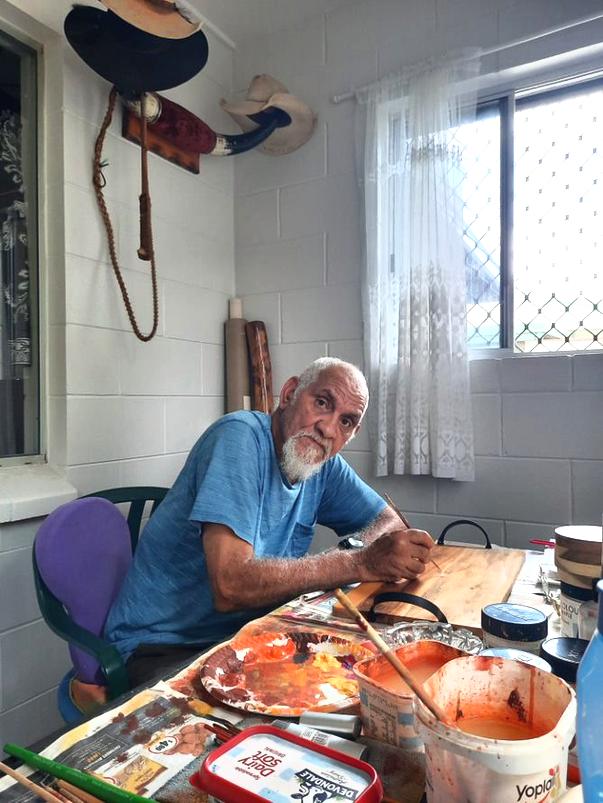
"I am a Ewamian person and an Elder of the Ewamian Aboriginal Corporation and tribe My father was born on Green Hills Station on the Gilbert River, before moving to Mona Mona outside of Kuranda
I was born in Mareeba, but I grew up in Tjupukai Country in Kuranda, before I left school and went back up to work on my own Country.
I started my working life in Gugu Badhun Country in the Valley of Lagoons. Then I went to work on many, many other stations, the likes of Abingdon Downs, Chadston, Inorunie over in Croydon Shire, Oasis area, Rosella Plains, Strathmore and around Mt Surprise. I was doing stock work. In those days there wasn’t much work around there was only three jobs going, that was for the railway, Council or ringing.
Station life has got a lot easier since I started, shorter hours and better pay When I first started in the bush you didn’t get much money at all As I got older, the money got better
Everything was on horseback then. There were no motorbikes now it’s all 4 wheelers and helicopters I’m old school, I don’t know how to do that chopper mustering
We saw a lot more animals from horseback. There were a lot of dingoes, emus and there seemed to be more fish in the river. Now fish don’t taste like fish anymore, I think it’s the pollution in the river. I've seen a lot of dead fish around waterways.

In the old days, the station owners could predict when to burn. They control burnt certain areas, which today they don’t do, and they don’t know how to light fire and burn off Country. The old ancestors used to burn certain areas too but they were controlled areas. You burnt off before it got too hot, so you don’t have a bad fire you just have a moderate, cool fire.
They used to know when to burn off the Country because they could see the rain was coming You could predict when the rain was going to come You can’t do that so much anymore, even the weatherman can’t tell you It’s so unpredictable now, you just have to take every day as it comes.
The wet season has changed a lot since then Now the rain is all down south!
When we were out on the stations, we would only come into town twice a year that was for the rodeo and Christmas If you got caught out on the station through the wet, you would work around the homestead. You’d be part of a skeleton crew, and would fix saddles and whips all the jobs you didn’t get to when you were too busy mustering. There was always something to do never a dull moment in the bush! Now, you work five days and you get to go home back then you might have worked 6 months before you got to go home!
I’ve seen some big floods too. One time on Chadston Station (now Gilbert River Station) there was four of us on horseback looking out over the Gilbert River when it was in flood. All of a sudden, the bank gave way from underneath us and we all slid into the river! We all had to swim out, including the horses. We were lucky we didn’t drown. I’ll never forget that."
Lewis Richards"I’ve lived for 56 years in the Gulf region. During the 1960s I lived in the Mt Surprise area. When Henry and I were newly married, we moved from there to Lynd Station We’ve also lived on Meadowbank Station, and we mustered around Einasleigh
My parents owned Amber Station and I also worked on Forest Home Station and lived on the Gilbert River, around Georgetown for four years Then we moved to Malanda and now I live at Dimbulah, so I’ve covered a fair bit of country I know the country around Mt Garnet, Mt Surprise and Georgetown area across to Chillagoe and Dimbulah pretty well
My parents first owned Gilldale Station to start with, and we would drove our sale cattle from there to Ingham yearly, and from there they would be railed to the meatworks in Townsville This was a 10 day droving trip through the Valley of the Lagoons, back to Camel Creek and down Mt Fox range
In 1967 we sold Gilldale and moved to Amber Station on the Lynd River near Mt Surprise that was another 10 day droving trip with 1,200 breeders Amber was 400 square miles, so it was a pretty big place Life has changed on the stations a real, real lot. When we moved there, it was all dirt roads no bridge crossings on the gullies or creeks. We completely relied on the railway All our food and goods came by train to Lyndbrook Siding, and the mail came from Almaden. Our bread came from Mareeba or Dimbulah on the train, and all our cattle were trucked out by train
The roads weren’t suitable for semi trailers in my early days, so all our cattle was driven to

We also caught up with local author Colleen Taylor at her son Kevin’s property, Ooralat Station, to talk about the changes she’s seen over nearly 60 years of living and working in the Gulf.
Lyndbrook Siding, where we put them on railway wagons.
As the years went past, the roads got a little bit better. There were a few more bridges put across gullies. And a bit more bitumen went in. When we first came, the road through the Forty Mile Scrub heading towards Mt Surprise was just starting to be formed In those 60 odd years, there’s been a great difference We always had broken down cars on the sides of roads, with flat tyres or broken windows Because there wasn’t any bitumen, you were driving on basalt rock, and the rock was all through the dirt, so we always had broken windscreens on the side of the road
We had to pull up at creeks when it was wet season time Well, you really couldn’t go anywhere because you’d get bogged From Mt Garnet to Twenty Mile Creek, there was only one lane of bitumen for 20 miles That was the only sealed road in the whole area
After having kids, we moved for education purposes We first bought a block at Millaa Millaa, which was a Brahman Stud, before moving to Mareeba We opened a saddle shop there When the kids were in about Years 4 and 6 we went contract mustering, so I taught them by correspondence then

I was in Ingham in 1956 when the big floods hit Those were the ones that hit the Gulf, particularly around Georgetown
I’ve lived on the Lynd River, Fossilbrook Creek, the Gilbert River I live on the Walsh River now I’ve seen them at their lowest, when they’re nothing but a few dry water holes, and then I’ve seen them when they were really, really high. It seems to be a cycle about every 7 to 10 years we get a big wet season.
Our monsoons don’t come down as much now as they used to. They would come down around this time of year to January, and then you’d get those big afternoon storms, and that would be every afternoon. Your mornings would always be clear, and then you’d get those big thunderstorms.
up to” there’d be a log up in the fork of a tree somewhere You would listen to the old fellows, and they’d seen it all before
We might get another big wet this year the Einasleigh has already got a good run in it I’m hoping we do it would be nice to get one of those old time monsoons coming down
Over time, I’ve seen great improvements in fencing, dam building, roadworks The price of cattle has lifted, so everyone can spend some more money on their property I went through the cattle slump, and it was only the tin mining which got my family through the bad times My father had a tin mining lease, so he would just go tin mining until you were able to get an income back off the property People have had it tough, but they stuck it out over the years It’s good to see this next generation all following on now "
When I was a child, I remember my granddad saying, “This is where the 1927 flood mark came Colleen Taylor



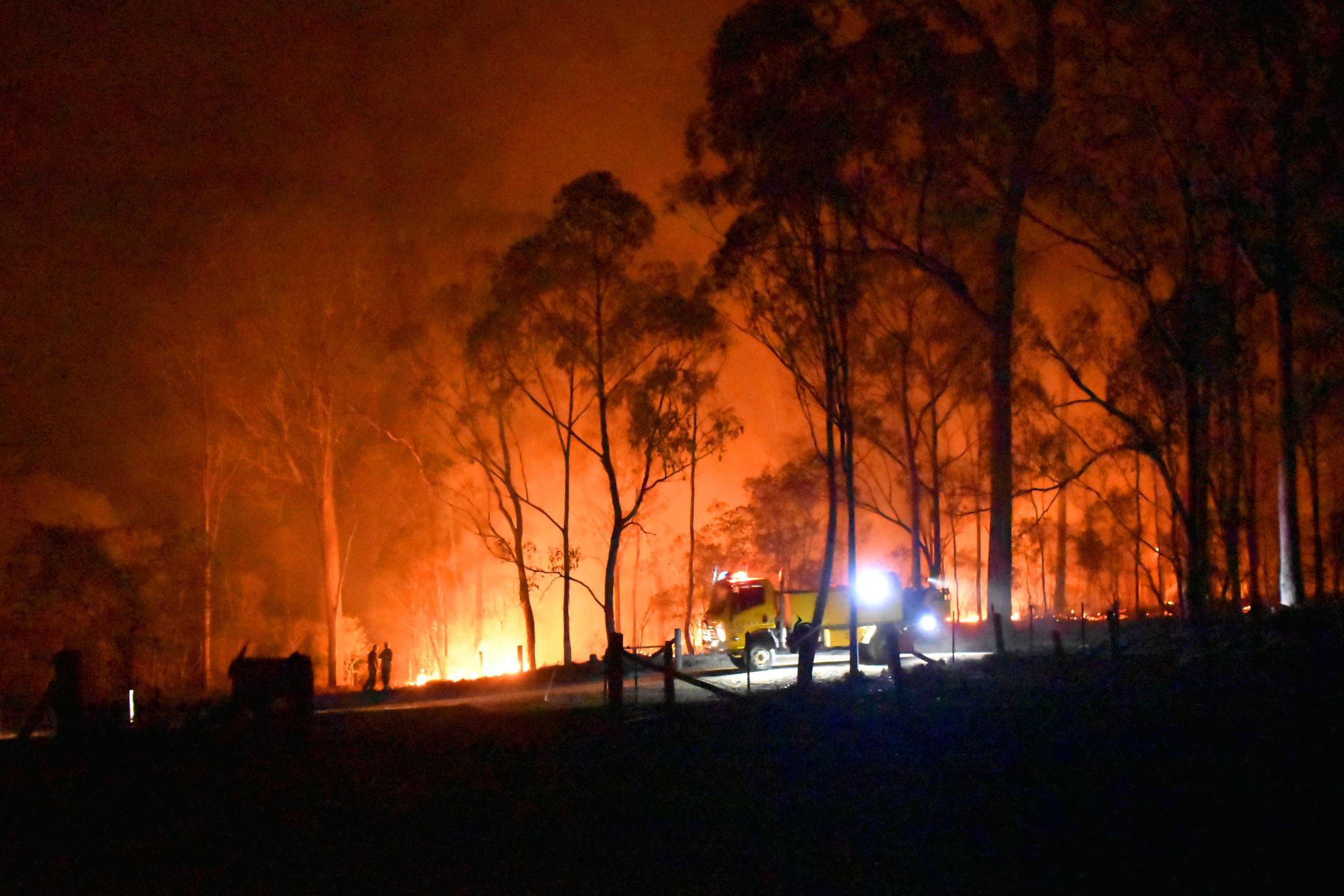
TellusaboutyourselfBorn and bred in Mareeba, I went to school here and moved away for a few years, had kids and came back again I started in the Fire Service at Millstream, Ravenshoe, before moving back to Mareeba I was an auxiliary firefighter here in Mareeba for 18 years, before moving back to Davies Creek Rural I’ve been a training officer with urban and rural fire brigades since 2003
Whatareadoyoucover?Davies Creek area covers from Spena Road to Emerald Creek, taking in the back end of Malone Road to Emerald Falls Road. We do most of our fires out of our area, going to places like Watsonville, Irvinebank and Dimbulah and in between, helping the brigades in those areas with support. We also support the urban brigades. Basically, in the Rural Fire Service you can go just about anywhere to fight fires. We also help a lot of other brigades doing hazard reduction burns early in the year, as well as in our area.
Whatissuesdoyoufaceinyourrole?We have a lot more support than we used to when I started we used to have to run chook raffles to buy gear.
We still do look for donations to help us get what is not supplied, butthebig issuewefaceisrecruitment trying to find young people and new people who want to come and help us.
The average age of our volunteers would be around the fifties. We are lucky in the Davies Creek Brigade because we’ve just recruited four young blokes who are in their twenties to join our station, so that will boost us a lot.
More women are getting interested, but much
more so down south and in the urban service than here It would be good to see more getting involved volunteering in the Rural Fire Service is not just for blokes
Whatwouldyouadvisepeoplewhowanttoget involved?Go to the Rural Fire Service website, you’ll find heaps of resources and information on there All of your Fire Wardens are there, so you can find out who to get in touch with It also tells you how to do a burn if you want to do that, and you’ll find your applications for fire permits there
The website also has a wealth of information about fire generally, and about joining up as a volunteer.
You don’t even have to live in that area for example, with the Davies Creek Rural Fire Brigade, there’s a lot of us that live in town. We are open to anyone who wants to join us.
Whatarethebenefitsofbeinginvolvedinthe RuralFireService?You meet heaps of people around the area I’ve met some really good people through the Rural Fire Service. There are
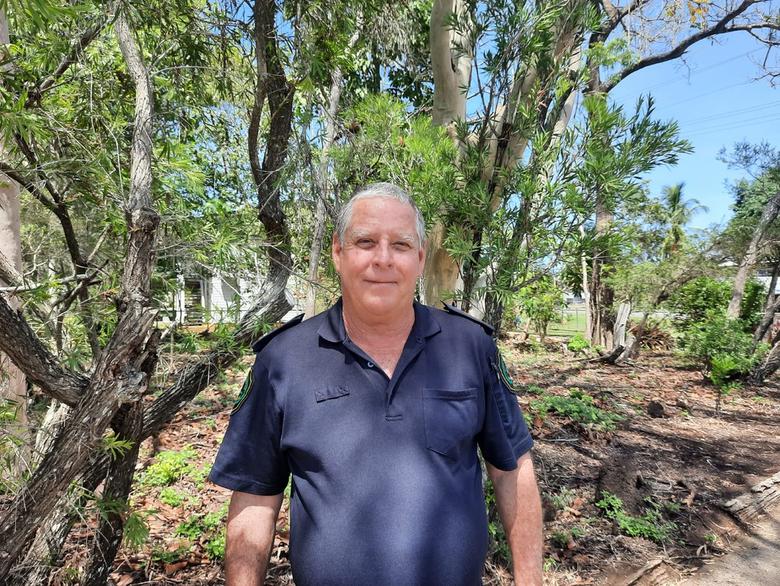
Gulf Savannah NRM caught up with Training Officer and First Officer of Davies Creek Rural Fire Brigade Barry Keal in Mareeba, where he told us about his experience with the Rural Fire Service and explained why and how more people can get involved.
different roles that you can do you don‘t actually have to be a firefighter to be involved. You can be what we call a support member. That could include radio operator, arranging to be at community events like rodeos, or other behind the scenes roles. There is a role for community educators too. There is a something for everybody regardless of age or ability
There are also go away deployments; I went down to NSW to help with the 2019 bushfires four times Last week I was away on a deployment at Bamaga. You can really get around and meet a lot of people with the Rural Fire Brigade.
Whataboutteenagersandyoungadults? You can join up from the age of 16 as a cadet, and at 18 you can start doing your courses to be a firefighter.
It’s great if you want to go into a career like natural resource management (NRM), or with parks and wildlife, Department of Resources, etc. These are all jobs which need the skillsets that we provide through volunteering you get that training.
Howaboutnewresidentsfrominterstate?Every rural fire brigade has concerns about property management. There are people who live down

south but buy property up here these get overgrown if they’re not looked after. I’ve seen some terrible examples from absent owners, where the place ends up with 6 foot grass right up against the house.
Ultimately, it’s the responsibility of the property owner to look after their property. Once again, new residents can find a lot of information on the website about how to get their land bushfire ready, particularly before the fire season. And again, if they ring up their local brigade there will be people who are happy to help them, who they can talk to about the conditions in the local area.
It would be great if some of these new residents could get involved too! For people who have recently moved here from down south, it's a good opportunity to gain an understanding of their new surroundings. We have different fires here in the north than they have in Victoria and NSW.
We’re out there doing it as the community, for the community. We are volunteers, so there’s no money in it for us, but there is a lot of good will and a lot of good times.
Barry Keal, Rural Fire ServiceGo to qfes.qld.gov.au or get in touch with your local fire warden to find out how.
Over the course of 2023, Gulf Savannah NRM will be providing a lot of opportunities and training for getting more fire smart and fire prepared on your property. To find out more, contact Vickie Mylrea by emailing vickie.mylrea@gulfsavannahnrm.orgor give us a call at (07)40921088.
Gulf Savannah NRM's Fire Smart Mareeba Shire project is supported by funding from the Australian Government
You meet heaps of people around the area I’ve met some really good people through the Rural Fire Service. There are different roles that you can do... You don‘t actually have to be a firefighter to be involved.

These large, squat ground dwelling frogs grow to 100mm and spend the dry season buried underground. They fill themselves with water then dig down into the soil. Here they shed their skin, which then dries and acts as a cocoon to help conserve water. The frogs bury themselves at a depth where rainwater filtering down will not reach them until there has been enough rain to form the temporary pools on the surface in which they can breed. After good rain, they can seem to suddenly appear in large numbers in tough, dry areas that you’d never suspect could support frogs.
 Photograph © Jodi Rowley
Photograph © Jodi Rowley
This medium sized tree frog (max 60mm) is normally a shade of brown its intensity may vary from very pale cream to almost black. Normally when observed active at night it is pale but will darken quickly if placed on a dark surface. The upper half of the eye is wine red. Roth’s Tree frogs generally call from higher up in trees They are sometimes also known as Laughing Tree Frog, as the call sounds like a long, descending laugh

Small tree frog (40mm) found in North West Queensland, including Normanton and Karumba. This frog shelters in vegetation and beneath ground debris in wetlands, creek margins and swamps. These frogs are also quite happy to move in with people, often seen at night around lights hunting for insects. Call is a repeated buzzing like an alarm clock.
The classic green tree frog, with long limbs and large toe pads, growing to 110mm. Green Tree Frogs spend the dry season in tree hollows, rock crevices, dunnies, drain pipes and other places where they can minimise water loss. Occasionally their calls may be heard from within their hiding places, especially when they sense the onset of rain they are the sound of the early wet. They are a long lived frog, surviving for more than 10 years.

This small frog (max 35mm) is related to the tree frogs but spends its life on the ground. It is a part of a group known as rocket frogs that all have a pointed snout and strong hind legs. They may be found even at the driest times of year, active near small bodies of water such as farm dams.
A small squat ground dwelling burrowing frog, which grows to 45mm and is often found in areas with sandy soil. It may emerge at any time of year after good rain has fallen Males call while floating in water These frogs create a foam nest for their eggs and the adult frogs may be found hiding beneath the egg masses



 Photograph © Michael Anthony
Photograph © Jodi Rowley
Photograph © Jodi Rowley
Photograph © Michael Anthony
Photograph © Jodi Rowley
Photograph © Jodi Rowley


How good groundcover and perennial species can boost profits for pastoralists
This is the time when the northern pastoral industry receives most of its rain for the year In turn, this rain grows pasture and forage. To make the most of rainfall at the break of season, country needs to be ‘rain ready’ or able to absorb as much rainfall to allow for abundant growth of forage.
The key to being rain ready is maintaining groundcover and perennial species in paddocks. Groundcover includes any plant and tree matter alive or dead that covers the soil surface and protects the soil from erosion. Perennial species have living roots in the soil, as opposed to annual species which are dead at the break of season. Live plant roots form pathways through the soil, allowing for better water infiltration and that means more productive pasture.
Keeping enough groundcover is the best way to reduce runoff and erosion. In turn, this means the soil will retain nutrients and organic matter. Plants like grasses protect the soil surface from the impacts of heavy rains, and slow down the water as it flows across the land. This lessens the topsoil that gets washed away. Ground covering grasses also encourage the rain to soak into the soil, increasing the water available for plants to drink through their root system.
Evidence tells us that at least 70% groundcover is needed to prevent run off and erosion. Under the right conditions, runoff happens slowly without being noticed. However, problems occur rapidly as groundcover decreases.
The minimum amount of groundcover needed to prevent excessive runoff and erosion will vary depending upon the amount of rain, how heavy it is, the season, and the existing condition of the soil.
Topsoil is really important it provides a seedbed for plants and grasses to germinate. It also contains good microorganisms that are crucial to the breakdown of plant debris and the recycling of nutrients back into the soil. Without this topsoil, growth of grasses is held back, as bare soils become exposed.
When raindrops fall on bare ground, the soil surface breaks apart and particles get splashed away, sealing the surface, which further compounds these problems.
The wrong grazing practices will reduce pasture productivity and decrease groundcover. This increases the risk of precious topsoil being lost when it rains.


Simple management changes such as adjusting stocking rates and spelling country can improve the perennial pasture content, and the amount of pasture and groundcover.

Overall, looking after the soil by keeping it covered throughout the dry season and ready for the wet will deliver better feed, and healthier and fatter cattle. In the end, this means better profits to pastoralists.
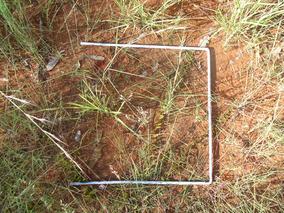

Not yet sixteen, the unworldly Roland left his home on the fringes of Sydney in 1960 to work as a stockman on the vast cattle stations of the Gulf Country. A more unlikely stockman you would not find, but it was out mustering on horseback and living in remote bush camps that Roland discovered his place in the world. Full of youthful stumbles and told with great freshness and gentle humour, this beautifully written coming of age story is a nostalgic and evocative reminder of a disappearing way of life.
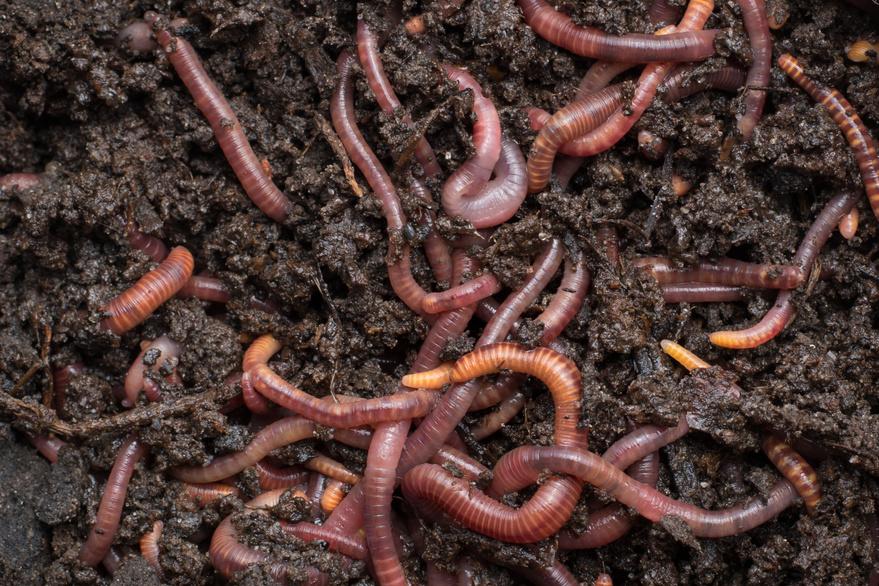

Earlier this year, Gulf Savannah NRM was joined by Kevin Azzopardi (syntropic farmer), Jennefer McLean (Tolga Bat Research & Rescue), and Glenn Oliver (Nutrigold Worm Products) for a workshop on large scale worm farming. Watch this video to gain their insights into setting up a large scale worm farm, feeding and managing the health of worms, and making (and using) vermi products. This project is funded by the Australian Government.
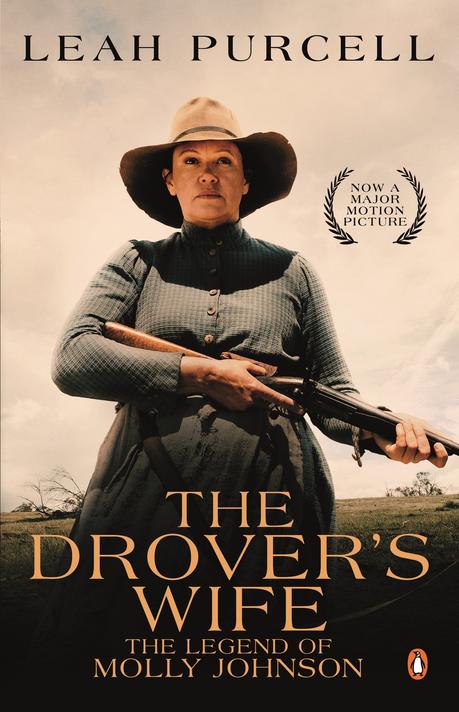
LEAH PURCELL | LIBBY APP (FREE FROM YOUR LIBRARY)
Deep in the heart of Australia's high country live Molly Johnson and her children One night, Molly has a visitor a black 'story keeper', Yadaka He's on the run, and exchanges kindness for shelter Both know that justice in this nation can be as brutal as its landscape In this brave reimagining of the Henry Lawson short story that has become an Australian classic, Purcell brings us a compelling thriller of our pioneering past that confronts head on issues of today: race, gender, violence and inheritance.
Tellusaboutyourselfandwhereyoucome from?I’ve been in and out of the Carpentaria Shire since the 1970s, so it feels like home I’m originally from Quilpie in South West Queensland, and have been on stations for a lot of years I’ve managed places for 30 odd years, including general manager for 10 years recently with Hewitt Cattle Australia, AA Company, Stanbroke and some other large private companies, mostly in North Queensland, North West Queensland and a little bit in Central Queensland. More recently, I was involved with properties in Central Australia, both sides of Alice Springs, and Southern Queensland.
WhatmadeyouwanttoworkatGulfSavannah NRM? It was like all good things come to an end, with managing properties. So it was time to consider what the next stage of life was going to
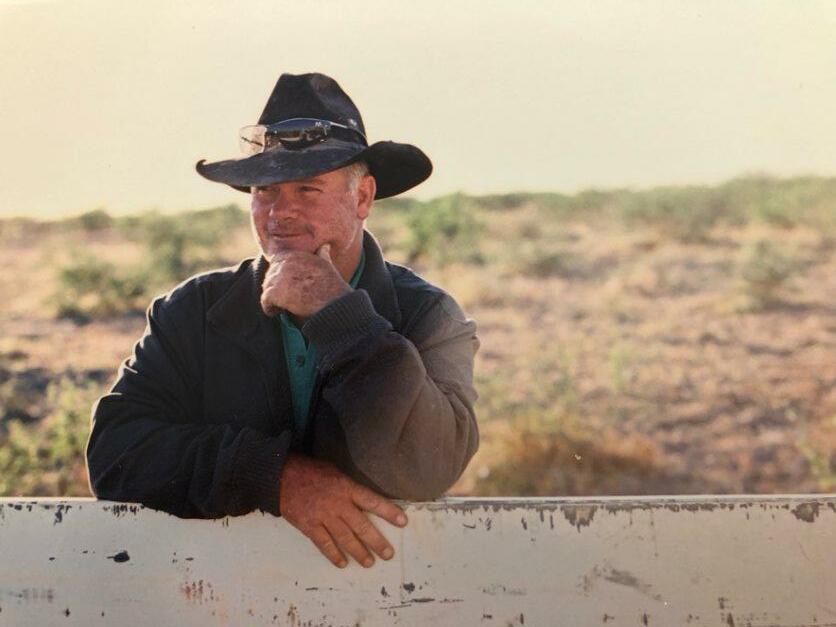
look like. The idea was to be able to be in a position where I could make some use of my previous experience to help other people. I thought I could try and do that through an organisation like Gulf Savannah NRM.
Ifyouhadasuperpowerwhatwoulditbe? I’d be able to predict the weather! Because that’s the biggest hurdle we have in the work that I’ve been involved with it’s either too wet or too dry or too this… So the weather, that will do. I’d make a lot of money out of it too!
Wheredidyougoonholidayasakid?Mostly on the Sunshine Coast… I went to school in Brisbane, boarding school for 8 years We’d go to Caloundra, Mooloolaba, Kawana Waters It’s changed a fair bit since then, it sure has!
What'syourfavouritemusic? Nothing in particular it could be from the 60s or 70s or could be from last week As long as to my ear it’s acceptable I mean I don’t even know the names of most of the songs, but if I hear them and I like them that’s enough for me
Craignewsletter: bit.ly/gsnrm news
We're in the midst of completing the second round of sampling for our Showcasing Resilient Grazing Landscapes with Better Biodiversity project. After successfully deploying monitoring equipment to half the involved pastoral properties, we are heading out this month to redeploy the equipment at the remaining sites. The data from the first sampling round is being analysed by researchers at JCU. Initial results suggest there are differences in the biodiversity recorded across the sites, but it remains to be seen how biodiversity is affected by grazing strategy. Watch this space!
This project has received funding from the Queensland Rural and Industry Development Authority (QRIDA) and the Australian Government.
We recently received funding for a new project that aims to increase understanding of the health of our region's natural resource assets (including soil, land, water and biodiversity) using sustainable monitoring This will help us figure out the overall land condition of the region, identify what issues there are, and highlight where funding should be targeted
The project will also establish an innovative monitoring and evaluation benchmarking program with 15 graziers, to help properties engage with emerging environmental markets

Proudly funded by the Queensland Government.
Our new Biodiversity Officer, Edward, setting up monitoring equipment

Gulf Savannah NRM is delivering a range of projects in regenerative agriculture, biodiversity, fire and drought management, community resilience, and more. Stay up to date with our monthly online
Our Project Support Officer Leah recently travelled across the Northern Gulf to visit primary schools in Mt Surprise, Georgetown, Normanton and Karumba working with over 100 students in total. The students collected a total of 32 water samples from across the region, with more tests still being run; once all the tests have been completed, the results will be entered into our Drop In The Bucket database, creating a map of water quality levels from Mareeba right across to Karumba.
This project is proudly supported by the Queensland Government Queensland CitizenScience Grants


Our Resilient Futures for Queensland's Gulf Savannah project is well underway, with recent developments including a disaster support webinar (search 'Gulf Savannah NRM' on YouTube to see the recordings), a Wet Season Checklist for properties (see page 30) and a series of maps for disaster risk assessment in the Etheridge, Croydon and Carpentaria LGAs.
This project received grant funding from the Australian Government
Since mid October, we've been busy across the region talking with a wide range of stakeholders to get their insights on the draft of the Northern Gulf Region NRM Plan 2022 2032, to make sure what needs to be in the plan is included, and what doesn’t is removed This has been really valuable, and people across the Northern Gulf have been very generous with their time and knowledge This consultation phase will continue early in the new year If you haven’t already had a look over the draft, we’d be very keen to hear from you You can visit our website at gulfsavannahnrm.org/nrmplan-consultation/ for a range of survey options, or if you'd prefer to talk to us directly, you can email nrmplan@gulfsavannahnrm.org or call (07)40921088 Your input is important to make sure the plan is the best it can be for our region
CARPENTARIASHIRE
SunsetTavern,Karumba (07) 4745 9183 sunsettavern@bigpond com

LesWilsonBarraDiscoveryCentre (07) 4745 2211 https://barracentre com au/ KarumbaSupermarket&Cafe (07) 4745 9188 Find us on Facebook
TheAnimalBar,Karumba 0497 901 266
FerrymanRiverCruise,Karumba (07) 4745 9155 www.ferryman.net.au
PurplePub,Normanton (07) 4745 1324 http://purplepub.com.au/ AlbionHotel,Normanton
CROYDONSHIRE
CroydonClubHotel (07) 4745 6184 www.croydonclubhotel.com.au
ETHERIDGESHIRE
EinasleighHotel (07) 4062 5222 www facebook com/einasleighhotel
CobboldGorge (07) 4062 5470 www.cobboldgorge.com.au
GeorgetownRoadhouse (07) 4062 1999 jabena@bigpond com
GeorgetownRodeoAssociation Facebook: Georgetown Rodeo Association rodeogeorgetown@gmail com
BedrockVillage,MtSurprise (07) 4062 3193 www.bedrockvillage.com.au
MountCarbineRoadhouse (07) 4094 3043 mtcarbineroadhouse.com
MountCarbineHotel 0400 465 682 mtcarbinehotel@gmail.com


